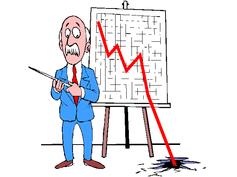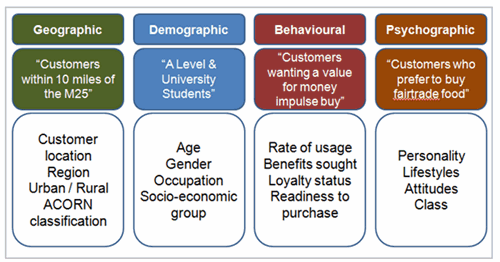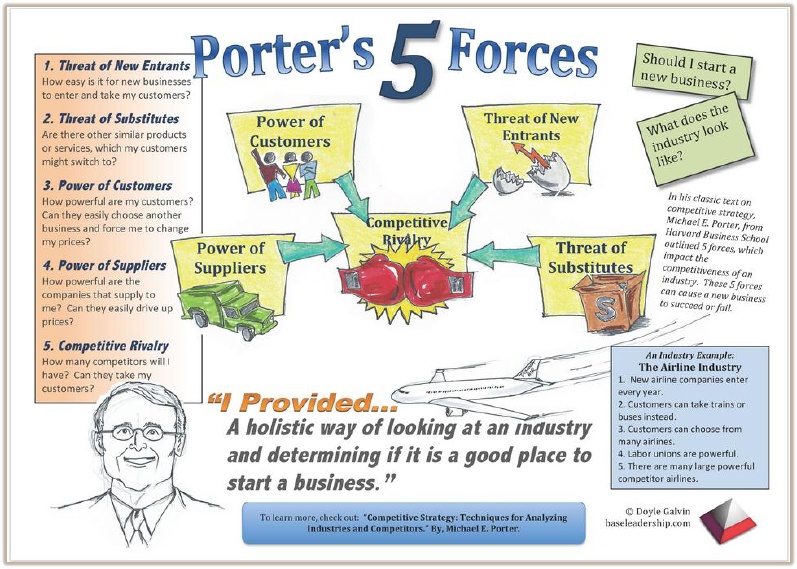4.2 Marketing Planning
What we will study?

By the end of this unit you should be able to:
- Understand what marketing is and the role of marketing
- Recognise the difference between market orientation andproduct orientation
- Assess the main features of markets, such as size, growth and share
- Understand the distinction between consumer goods and service markets and industrial markets
- Analyse the marketing of non-profit-making organisations
- Describe the elements of a marketing plan
- Analyse asset-led marketing and social marketing
What is the "marketing mix"?

The marketing mix is the term given to the key decisions that Product, Place, Price, Promotion, People, Process, Physical evidence and Packaging must be taken in the effective marketing of a product. The marketing mix is made up for seven interconnected decisions often referred to as the 7P's(+1): Product, Place, Price, Promotion, People, Process, Physical evidence and Packaging.
Physical Products are assessed using the traditional four P’s of the marketing mix: product, place, price, and promotion. These are the main ones.
The remaining 3P's are mainly related to marketing services: People, Process and Physical Evidence.
Physical Products are assessed using the traditional four P’s of the marketing mix: product, place, price, and promotion. These are the main ones.
The remaining 3P's are mainly related to marketing services: People, Process and Physical Evidence.
The marketing mix applied to McDonalds
A new look at the 4P's of marketing
Ethics of marketing

Discuss the ethical issues of what is marketed and how it is marketed: nationally, internationally and across cultures.
Marketing can in many cases be unethical, as businesses which market cigarettes or alcohol. One of the most prominent examples of how ethical issues interfere with the sales of goods is when cigarette companies (for example in Australia) are forced to place a large label underneath: "smoking causes cancer". This is a major hinderance in trying to sell products, as it will give customers less incentive to buy.
Marketing can in many cases be unethical, as businesses which market cigarettes or alcohol. One of the most prominent examples of how ethical issues interfere with the sales of goods is when cigarette companies (for example in Australia) are forced to place a large label underneath: "smoking causes cancer". This is a major hinderance in trying to sell products, as it will give customers less incentive to buy.
The marketing audit
A marketing audit is a periodic review of the cost and effectiveness of a marketing plan including an analysis of internal and external influences.This includes an examination of a business’ marketing strategies, objectives, environment and activities. It is conducted regularly in order to identify both positive and negative impacts. Once these have been confirmed, the aim is to locate problem areas and make recommendations for corrective action or reinforce positive aspects. The audit therefore allows a firm to review its marketing situation, and so is very valuable if the business wants to make change. At the conclusion of the audit the business should know what the current marketing situation is.
Explain the value of a marketing audit as a business tool.
Imagine that Bevan Enterprises will lose 50% of its customers, 50% of its investors in its first year and 50% of its labor force within four years time. By identifying the causes related to this defection and loss, a business is able to stop the haemorrhaging of labor, investment and sales. Conducting a market audit enables the firm to achieve efficiency and expose weaknesses and strengths. In light of an ever-growing competitive market, the audit will indicate the most needed improvements and the corrective-action required. Generally a market audit follows three steps:
- Actual sales performance compared with the original sales budgets
- Whether the company is achieving its SMART objectives
Explain the value of a marketing audit as a business tool.
Imagine that Bevan Enterprises will lose 50% of its customers, 50% of its investors in its first year and 50% of its labor force within four years time. By identifying the causes related to this defection and loss, a business is able to stop the haemorrhaging of labor, investment and sales. Conducting a market audit enables the firm to achieve efficiency and expose weaknesses and strengths. In light of an ever-growing competitive market, the audit will indicate the most needed improvements and the corrective-action required. Generally a market audit follows three steps:
- An analysis of the businesses internal and external strengths and weaknesses
- An analysis of external opportunities for growth and threats. Carrying out a SWOT and PEST analysis are central to this.
- Reviewing the progress of the marketing plan:
- Actual sales performance compared with the original sales budgets
- Whether the company is achieving its SMART objectives
Market Segementation
Market segmentation: The process of splitting a market into distinct groups of buyers in order to better meet their needs. The main methods of market segmentation are based on: geographic, demographic, behavioural (UK A Levels) and psychographic factors.
Some examples of market segmentation include Coca-Cola and Pepsi making regular sodas but also Diet Coke and Pepsi Nex. Think about car companies, the Ford Escort comes in different sizes such as saloon and convertible. How many of you belong to a sports club? Think about the difference between the daytime users and the nighttime users and the different services and pricing plans provided. All are appealing to different groups of people.
Marketing objectives and strategy
Marketing objectives are the goals set for the marketing department to help the business achieve its overall objectives, whereas a marketing strategy
is a long-term plan established for achieving marketing objectives. Think of preparing for a basketball game, the objective might be score as many points as possible but, how do you achieve that? You need a strategy, and the strategy might be for you get the ball to Alex Gordon as much as possible around the 3 point line. Easy peasy......... squeeze the lemon.
Examples of marketing objectives include:
In order to be effective marketing objectives should fit in with the overall aims and mission of the business and should reflect the aims of the whole organisation. Senior management must play a decisive role in their development as they determine the markets and products a business trades in for years to come and these issues must be dealt with by managers at a very senior level in the company. Finally, as with any objectives they must be measurable and communicated to all departments in the business organisation. Why are marketing objectives important? Well, they provide a sense of direction and progress can be monitored against targets set up the organisation. Also, your strategy is determined by these objectives. Without having clear objectives of what you want to achieve, how can you have a strategy? It would be pointless having discussions how to market a product (this is the strategy part) if you do not have clear and measurable objectives.
Successful market segmentation leads to the building of an accurate consumer profile and eventually target markets. A well-targeted product will need less advertising and promotional support than one that does really meet the needs and wants of the consumers that it is aimed at.
is a long-term plan established for achieving marketing objectives. Think of preparing for a basketball game, the objective might be score as many points as possible but, how do you achieve that? You need a strategy, and the strategy might be for you get the ball to Alex Gordon as much as possible around the 3 point line. Easy peasy......... squeeze the lemon.
Examples of marketing objectives include:
- increasing market share possibly in order to to gain market leadership
- increasing brand awareness
- increasing total sales levels either in terms of volume or sales value
- development of new markets for existing products to spread risks
In order to be effective marketing objectives should fit in with the overall aims and mission of the business and should reflect the aims of the whole organisation. Senior management must play a decisive role in their development as they determine the markets and products a business trades in for years to come and these issues must be dealt with by managers at a very senior level in the company. Finally, as with any objectives they must be measurable and communicated to all departments in the business organisation. Why are marketing objectives important? Well, they provide a sense of direction and progress can be monitored against targets set up the organisation. Also, your strategy is determined by these objectives. Without having clear objectives of what you want to achieve, how can you have a strategy? It would be pointless having discussions how to market a product (this is the strategy part) if you do not have clear and measurable objectives.
Successful market segmentation leads to the building of an accurate consumer profile and eventually target markets. A well-targeted product will need less advertising and promotional support than one that does really meet the needs and wants of the consumers that it is aimed at.
Porter's Five Forces
| Porters 5 forces and Mcdonalds |


